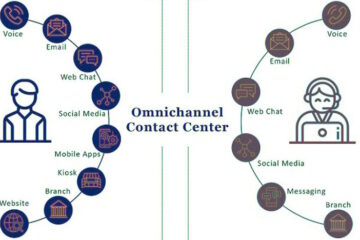Embedded systems technology is changing at a rapid pace and firmware acts as the behind the scenes hero that ensures the seamless operation of various devices, like smart thermostats, medical equipment and industrial sensors In this dynamic environment firmware development encounters fresh hurdles.
Devices must exhibit resilience, security and adaptability to future upgrades while functioning within constraints of limited resources. How can developers make sure that the firmware they develop now will remain relevant in the run?
Ensuring that firmware remains up to date is essential for the lasting dependability of embedded devices; businesses that overlook this run the risk of facing rising threats ranging from security flaws, to hardware issues. Let’s delve into tactics that support the creation of flexible firmware tailored to address needs.
The Role of Firmware in Systems and Devices
Devices would be rendered useless without firmware; it allows even the advanced hardware features to function effectively. In devices firmware has functions to perform, fulfilling various important roles:
- Upon starting up the systems hardware components, like processors and memory are initialized by the firmware to ensure they are ready, for operation and functioning correctly.
- Abstracted hardware layers allow for an interface, in firmware, enabling interaction with higher level software, by concealing intricate hardware details.
- Power management involves the firmware taking care of power saving modes as managing voltage regulation and battery charging to enhance power efficiency.
- Firmware offers control over time input/output devices such as sensors and motors as well as RF chips to enable swift responses, in real time situations.
- Security and safety are ensured through managing hardware access, with firmware to protect against attacks and incorporating safety measures, for fault conditions.
- Firmware features field diagnostics bootloaders for updates and remote management ensuring devices can be easily maintained post deployment.
Developing firmware that can withstand advancements and security threats is crucial, for ensuring the longevity of embedded devices. By utilizing a firmware development service companies can benefit from expert advice on enhancing device performance security measures and scalability over time. These services prioritize creating secure and energy efficient firmware to enable embedded systems to stay operational and adaptable in response to updates and changes in technology. Invest in customized firmware solutions to ensure that your devices are well prepared for long term use and future advancements in technology.
Ensure Security at All Levels
In a world where devices are everywhere connected nowadays security must be a priority and not something to think about. Devices that are embedded often become targets for hackers due to being part of bigger networks but lacking strong security measures. Safeguarding the firmware from harmful attacks is crucial, for creating durable and future ready devices:
- Secure the Boot. To safeguard the longevity of firmware, in the future is to have a secure boot feature in place to certify that authorized software can operate on the device and prevent it from being vulnerable to code, like malware or tampered updates.Incorporating signatures ensures that every firmware update is valid before it is implemented.
- Over-the-Air (OTA) Updates. In today’s era of the Internet of Things (IoT) it’s essential to have, over the air (OTA) updates in place to keep devices secure and up to date effortlessly without the need for intervention by developers pushing security patches and new features remotely. These updates make it simple for devices to stay protected and functional against evolving threats by ensuring regular maintenance and enhancements are easily accessible, through OTA technology.
Starting with security embedded in the firmware and keeping it up to date through measures such as boot and over the air updates is crucial, for maintaining the resilience of devices against threats.
Modular Design for Flexibility
Software code is usually closely linked to the hardware it operates on; however this connection can lead to complications as hardware evolves with time. Adopting a design strategy can effectively segregate functions within the software code allowing for simpler updates or replacements of particular components, without necessitating a complete system overhaul.
Abstraction Layers
One method to ensure adaptability is, by utilizing hardware abstraction layers (HAL). HALs separate the firmware from the hardware enabling developers to create code that’s more universal and adaptable across platforms or future device versions, without the need to completely rewrite the firmware when updating hardware components or introducing new features.
Microservices Approach
Drawing inspiration from software development practices applying a microservices oriented framework to firmware is possible. Under this method various functions such as communication protocols and sensor management are viewed as modules. This setup allows developers to enhance or resolve issues in one aspect without impacting the rest of the firmware system.
By employing a design approach, the firmware development process ensures adaptability and ease in accommodating hardware modifications or functional enhancements without the need for extensive revisions.
Enhance for Power and Performance
Devices with embedded systems frequently face restrictions due to their power and processing capacities; this is especially true for devices that run off batteries.Transportation device engineers need to prioritize efficiency in their firmware design to maintain performance while managing power usage for reliability and effectiveness of the device, in the long run.
Crafting Code for Optimal Energy Efficiency
Efficient firmware plays a role in devices such as wearables and portable medical equipment by conserving power usage through techniques, like utilizing low power modes during idle times and optimizing communication protocols to reduce power consumption.
Adaptive Performance Scaling
One way to future proof your approach is by creating firmware that’s flexible enough to adjust to evolving performance demands over time. For example when new functionalities or improvements are implemented the firmware should be able to modify its performance levels according to the processing demands. This approach does not conserve energy. Also guarantees that the device remains effective when incorporating future enhancements without any decline in performance.
In summary, by tuning firmware to enhance power efficiency and adaptive performance we can guarantee that embedded devices will maintain their functionality and effectiveness as they evolve in complexity over time.
Plan for Long-Term Maintenance
Devices that are embedded typically last longer than consumer electronics do, in terms of lifespan duration. Industrial machinery, medical apparatus and even household appliances can remain operational for periods – sometimes spanning decades – which underscores the importance of developing firmware with durability a priority. It’s essential to plan for maintenance in order to prevent the risk of becoming obsolete over time.
Ensuring that newer firmware versions remain compatible with devices is essential to avoid the expense of replacing hardware due to software advancements. Developing firmware that remains functional with software updates allows businesses to prolong the lifespan of their devices effectively.
Having documentation for the firmware makes it simpler to keep it up to date and make changes when needed in the future by developers who may not be familiar with the firmware details. To prevent any updates or modifications, from causing issues or disrupting existing functions of the system it’s important to carry out testing and particularly use automated regression testing methods.
Wrap Up
In wrapping up the discussion it’s important to highlight that effective long term planning, for maintaining compatibility with systems as well as comprehensive documentation and rigorous testing procedures play a vital role in allowing firmware to adapt and remain valuable throughout the entire lifespan of a device.
Ensuring that firmware is future proof has transitioned from being a choice to becoming a necessity in today’s interconnected world. Key strategies such as giving importance to security measures incorporating design concepts focusing on energy efficiency and preparing for maintenance are essential steps for developers seeking to build durable embedded systems. Anticipating obstacles now allows companies to guarantee that their devices stay up to date and functional for the haul while also maintaining security measures effectively into the future.




0 Comments